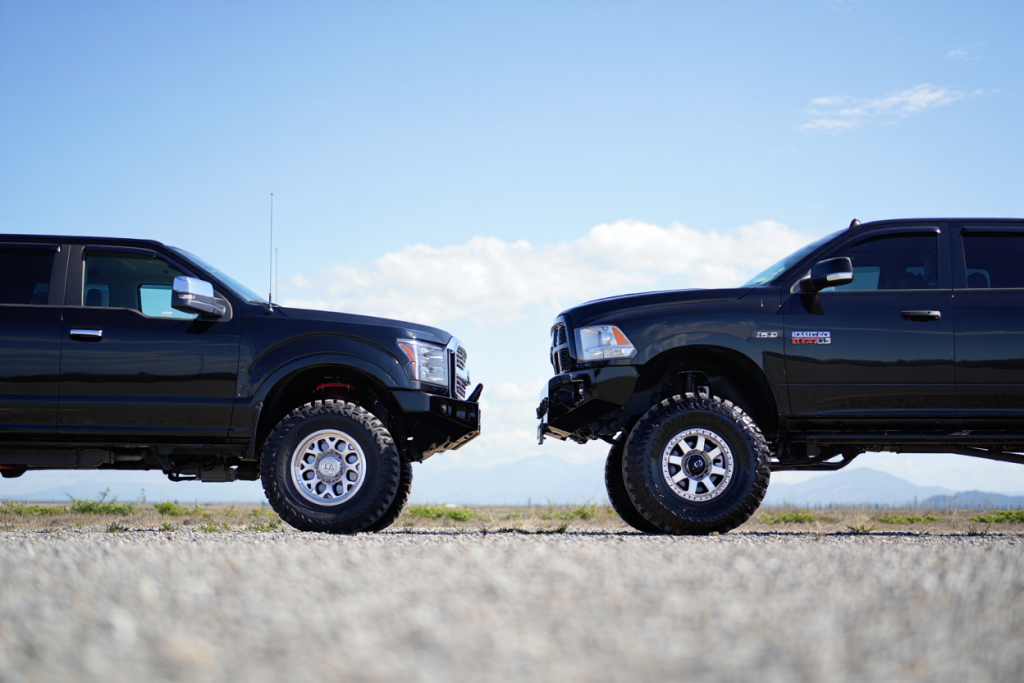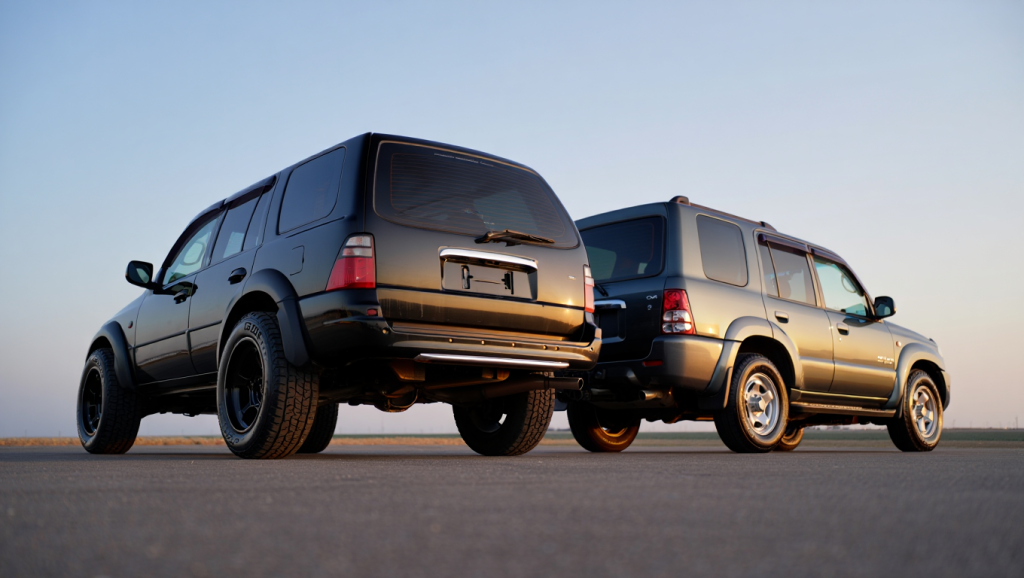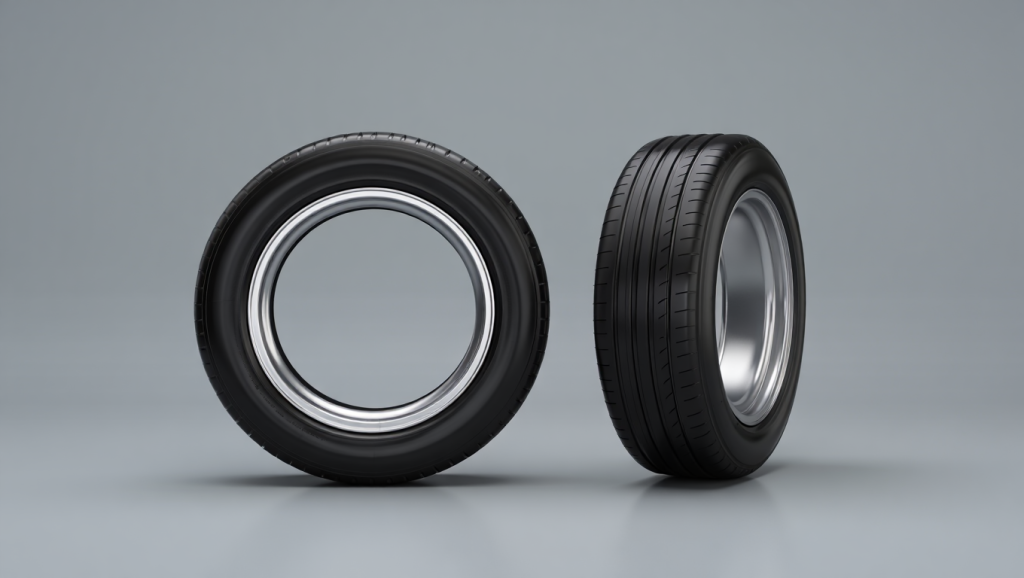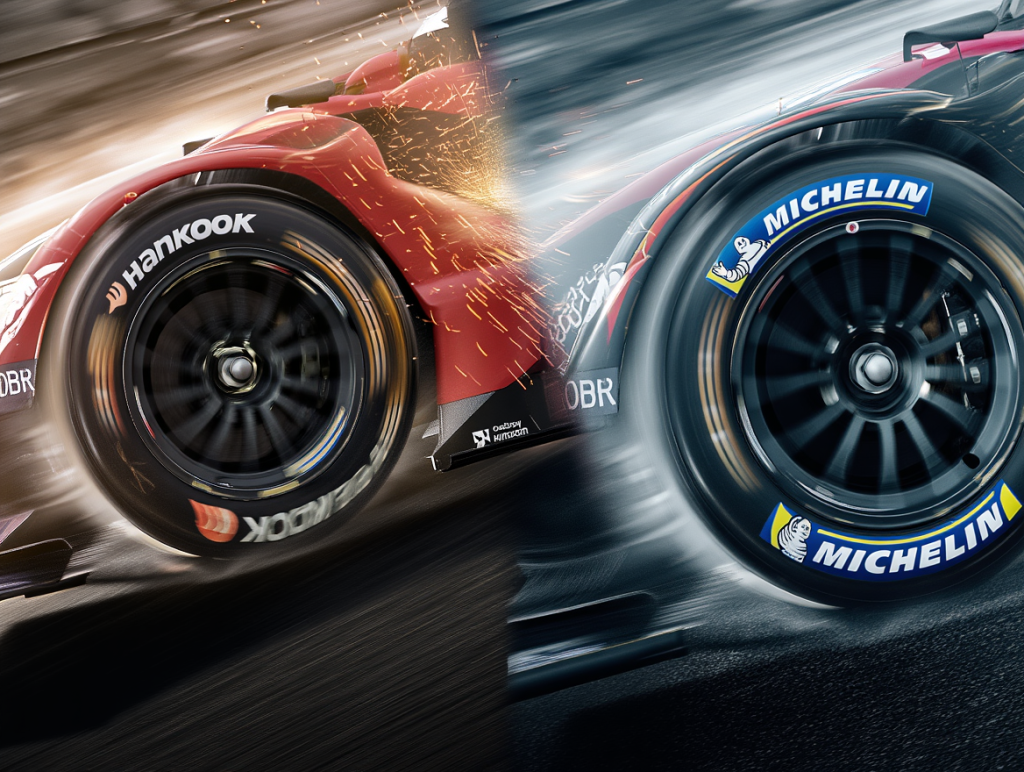When it comes to upgrading your truck or SUV, choosing between 33 and 35-inch tires can completely change your ride’s performance, look, and handling. In this review, we’ll compare the Atturo Trail Blade M/T 33×12.50R20 and the Forceum M/T 08 Plus 35×12.50R20LT — two popular off-road tires that dominate their class.
Why Do I Recommend the Atturo Trail Blade M/T 33×12.50R20?
The Atturo Trail Blade 33-inch tire offers a great mix of durability, traction, and affordability that’s hard to beat. Below are the detailed reasons why it outshines the 35-inch Forceum M/T 08 Plus for most drivers.
- Superior Ride Comfort:
The 33-inch size provides a smoother, quieter ride on highways and city roads compared to the larger 35-inch option. The smaller diameter creates less road noise and vibration while maintaining strong off-road traction.
- Better Fuel Efficiency:
Due to the lighter weight and smaller rolling resistance, the 33-inch tires help improve your truck’s fuel economy — an advantage for daily drivers who still need rugged performance.
- Improved Steering Response:
The Atturo’s tread design and compact profile give better control and handling in tight turns, making it ideal for mixed driving — city, highway, and light off-road trails.
- Affordable and Long-Lasting:
Compared to 35-inch tires, the 33-inch Trail Blade is more budget-friendly and causes less wear on your suspension and drivetrain over time, reducing maintenance costs.
- All-Terrain Versatility:
The aggressive tread pattern and wide voids allow solid off-road traction in mud, gravel, and sand, while still maintaining a comfortable highway experience.
- Less Strain on Vehicle Components:
The smaller size means less stress on axles, gears, and the transmission, which extends your truck’s lifespan and prevents premature mechanical wear.
- Easier Fitment and No Lift Needed:
The 33-inch tires often fit most trucks and SUVs without requiring a lift kit or major modifications, while 35-inch tires usually need trimming or suspension adjustments.
- Balanced Look and Performance:
The 33-inch setup offers an aggressive stance without overdoing it, keeping both aesthetic appeal and practicality in check.
In contrast, the Forceum M/T 08 Plus 35-inch tire is a great option for hardcore off-road enthusiasts who frequently tackle mud, deep snow, or rocky terrain. However, it requires more power, often demands suspension lifts, and slightly reduces fuel efficiency — making it less suitable for everyday driving.
Side-by-Side Comparison Chart of the 33 vs 35 Tires
|
Feature |
Atturo Trail Blade M/T 33×12.50R20 | |
| Tire Size | 33 inches | 35 inches |
| Load Rating | 114Q | 121Q |
| Tread Type | Mud-Terrain (All-Terrain Capable) | Mud-Terrain (Extreme Off-Road) |
| Ride Comfort | Smoother and quieter on roads | Rougher, louder ride on highways |
| Fuel Efficiency | Better due to smaller size | Slightly reduced efficiency |
| Vehicle Compatibility | Fits most trucks/SUVs without lift | Often requires lift kit or trimming |
| Off-Road Capability | Excellent in mud, sand, and dirt | Superior in deep mud and rock crawling |
| Durability | High tread life, balanced wear | Heavy-duty build but faster wear on-road |
| Handling | Stable and predictable | Slightly slower steering response |
| Cost | More affordable | More expensive overall |
| Weight | Lighter (easier on drivetrain) | Heavier (adds strain on components) |
What Common 33 vs 35 Tires Can Do?
Both 33-inch and 35-inch tires are engineered for off-road strength and durability. Whether you choose Atturo or Forceum, these tires are built for enthusiasts who demand power, grip, and performance beyond what standard all-season tires can deliver. Below are the common features and what they can do for your truck or SUV.
1. Aggressive Tread Design for Off-Road Traction
Both the 33-inch Atturo and 35-inch Forceum tires come with deep tread blocks and wide shoulder lugs that dig into mud, gravel, and sand. These patterns provide superior grip and self-cleaning performance, allowing your truck to maintain traction even in tough conditions.
2. Reinforced Sidewalls
Each tire features strong, reinforced sidewalls designed to handle sharp rocks, roots, and other off-road hazards. The extra strength not only increases puncture resistance but also allows you to run lower air pressures for more traction when needed.
3. All-Weather Capability
The Atturo Trail Blade and Forceum M/T 08 Plus are both mud-terrain tires that can handle rain, snow, and dry conditions with ease. Their aggressive tread blocks channel water efficiently to prevent hydroplaning and ensure consistent grip across surfaces.
4. Enhanced Load-Carrying Capacity
Both tire sizes are rated for heavy-duty use, meaning they can carry significant loads — perfect for trucks used for hauling, towing, or carrying gear for outdoor adventures. The 35-inch version generally carries slightly more weight due to its larger construction.
5. Off-Road Durability
Constructed with tough rubber compounds, these tires resist cuts, chips, and wear during off-road use. Whether you’re driving on rocky trails or muddy fields, both 33-inch and 35-inch models provide long-lasting durability.
Common Features of 33 vs 35 Tires
|
Feature |
Atturo Trail Blade M/T 33×12.50R20 |
Forceum M/T 08 Plus 35×12.50R20LT |
| Tread Design | Deep, aggressive tread pattern | Deep, aggressive tread pattern |
| Sidewall Strength | Reinforced for puncture resistance | Reinforced for puncture resistance |
| Mud-Terrain Performance | Excellent | Excellent |
| All-Weather Handling | Reliable across wet/dry/snow | Reliable across wet/dry/snow |
| Self-Cleaning Ability | High | High |
| Load Capacity | Strong | Strong |
| Durability | Off-road tough compound | Off-road tough compound |
A Detailed Comparison of the 33 vs 35 Tires
When comparing the Atturo Trail Blade M/T 33×12.50R20 and the Forceum M/T 08 Plus 35×12.50R20LT, there’s no denying that both are exceptional off-road performers. However, they cater to slightly different types of drivers. Below is a detailed feature-by-feature breakdown to help you make the best decision.

Ride Comfort and Handling
The Atturo Trail Blade 33-inch tire offers superior ride comfort due to its smaller size and optimized tread pattern. It creates less vibration on paved roads, delivering a smoother and quieter highway experience. The tire’s smaller diameter also improves steering response, which is ideal for daily driving and light off-roading.
In contrast, the Forceum 35-inch tire provides a bolder off-road stance but sacrifices comfort. The additional height and aggressive tread pattern make it slightly noisier and less stable at highway speeds. For those who primarily drive off-road, however, this trade-off may be worth it.
Off-Road Performance
When it comes to tackling rugged terrain, the Forceum M/T 08 Plus 35-inch tire takes the lead. Its deeper tread blocks and increased ground clearance allow for better traction in mud, rocks, and sand. The larger diameter also helps improve approach angles and reduce the risk of bottoming out on obstacles.
The Atturo Trail Blade 33-inch tire still performs impressively off-road. It’s excellent for mild to moderate trails and muddy paths, offering reliable grip and self-cleaning capability. However, for extreme off-road use, the 35-inch version provides that extra edge.
Fuel Efficiency
Fuel efficiency is one of the most noticeable differences between the two. The 33-inch Atturo tire is lighter and has less rolling resistance, meaning it requires less power to rotate. This leads to improved fuel economy and reduced strain on your engine and transmission.
The Forceum 35-inch tire, being heavier and larger, slightly reduces mileage and increases fuel consumption. It also places additional stress on your vehicle’s drivetrain components, potentially shortening their lifespan if not properly maintained.
Fitment and Modifications
The Atturo Trail Blade 33-inch tire wins when it comes to easy fitment. It fits most stock trucks and SUVs without requiring a lift kit or trimming. This makes it a practical upgrade for drivers who want an aggressive look without major vehicle modifications.
On the other hand, the 35-inch Forceum tire often requires suspension lifts, fender trimming, or recalibration to fit properly. This can increase installation costs and affect your vehicle’s factory warranty if not done correctly.
Durability and Longevity
Both tires are built to last, but they differ slightly in how they wear over time. The Atturo 33-inch tends to wear more evenly on-road and offers a longer tread life when used in mixed conditions. Its design balances toughness with comfort, making it suitable for drivers who spend more time on highways than trails.
The Forceum 35-inch tire has a thicker sidewall and robust construction, which gives it an edge in extreme conditions. However, when used mostly on pavement, its aggressive tread can wear out faster, reducing its lifespan.
Cost and Value
Cost is another major factor for most buyers. The 33-inch Atturo Trail Blade is typically more affordable — both in purchase price and long-term maintenance. It’s also easier on your vehicle’s components, which means fewer repair costs down the road.
The 35-inch Forceum tire, while more expensive, delivers added ground clearance and off-road traction that may justify the cost for serious off-roaders. However, for daily driving, it’s often more tire than you need.
Load and Towing Capacity
The Forceum 35-inch tire has a slightly higher load rating (121Q) than the Atturo 33-inch (114Q), making it better suited for heavy-duty trucks used for towing or carrying large payloads. Still, unless you frequently haul heavy equipment or trailers, the 33-inch Atturo provides more than enough strength for typical use.
Aesthetic Appeal
Many drivers upgrade to 35-inch tires for their bold, aggressive look. The Forceum 35-inch undeniably makes a visual statement, giving trucks a lifted, rugged appearance that turns heads.
The Atturo 33-inch, on the other hand, offers a more balanced, proportional look — still tough, but without compromising ride quality or requiring vehicle modifications.
Conclusion
After comparing both models in detail, the Atturo Trail Blade M/T 33×12.50R20 is the better all-around choice for most drivers. It strikes the perfect balance between comfort, performance, and practicality. It’s easier to install, delivers better fuel economy, and won’t wear out your drivetrain as quickly.
If your daily routine involves city driving, highway cruising, and occasional off-road adventures, the 33-inch tire is the smarter, more cost-effective option.
However, if your truck spends most of its time in deep mud, rocky trails, or heavy hauling, then the Forceum M/T 08 Plus 35-inch tire will give you the power and clearance you need.
In the end, the Atturo Trail Blade 33-inch tire wins for its versatility, long-term value, and smoother ride — a combination that makes it the top recommendation for everyday truck owners who still crave off-road performance.
FAQs About 33 vs 35 Tires
Do 35-inch tires require a lift kit?
Yes, in most cases, installing 35-inch tires requires a lift kit or fender trimming to prevent rubbing, especially on turns or bumps.
Will 35-inch tires affect fuel economy?
Yes. The larger and heavier design increases rolling resistance, which typically reduces fuel efficiency by about 1–2 MPG compared to 33-inch tires.
Can 33-inch tires fit on stock trucks?
Most trucks and SUVs can fit 33-inch tires without modifications. They offer a noticeable size upgrade while maintaining factory ride comfort.
Which tire size is better for daily driving?
The 33-inch tire is more practical for daily use due to its smoother ride, better handling, and improved gas mileage.
Are 35-inch tires better for off-road use?
Yes. Their increased diameter and deeper tread make them ideal for challenging terrain, mud, and rocks.
Do larger tires affect speedometer accuracy?
Yes. Upgrading to 35-inch tires can cause your speedometer to read slower than your actual speed unless recalibrated.
How do 33 vs 35 tires affect towing capacity?
The 35-inch tires typically support a higher load rating, but they can also increase drivetrain stress. 33-inch tires are better for moderate towing needs.
Which tire size lasts longer?
When used mostly on highways, 33-inch tires generally last longer because they experience less heat buildup and tread wear compared to 35-inch tires.

Benjamin Grey is an automotive engineer and writer at Car Parts Advisor. With years of experience in the automotive industry, he shares expert advice on car parts, maintenance, and repairs to help car owners keep their vehicles running smoothly.





